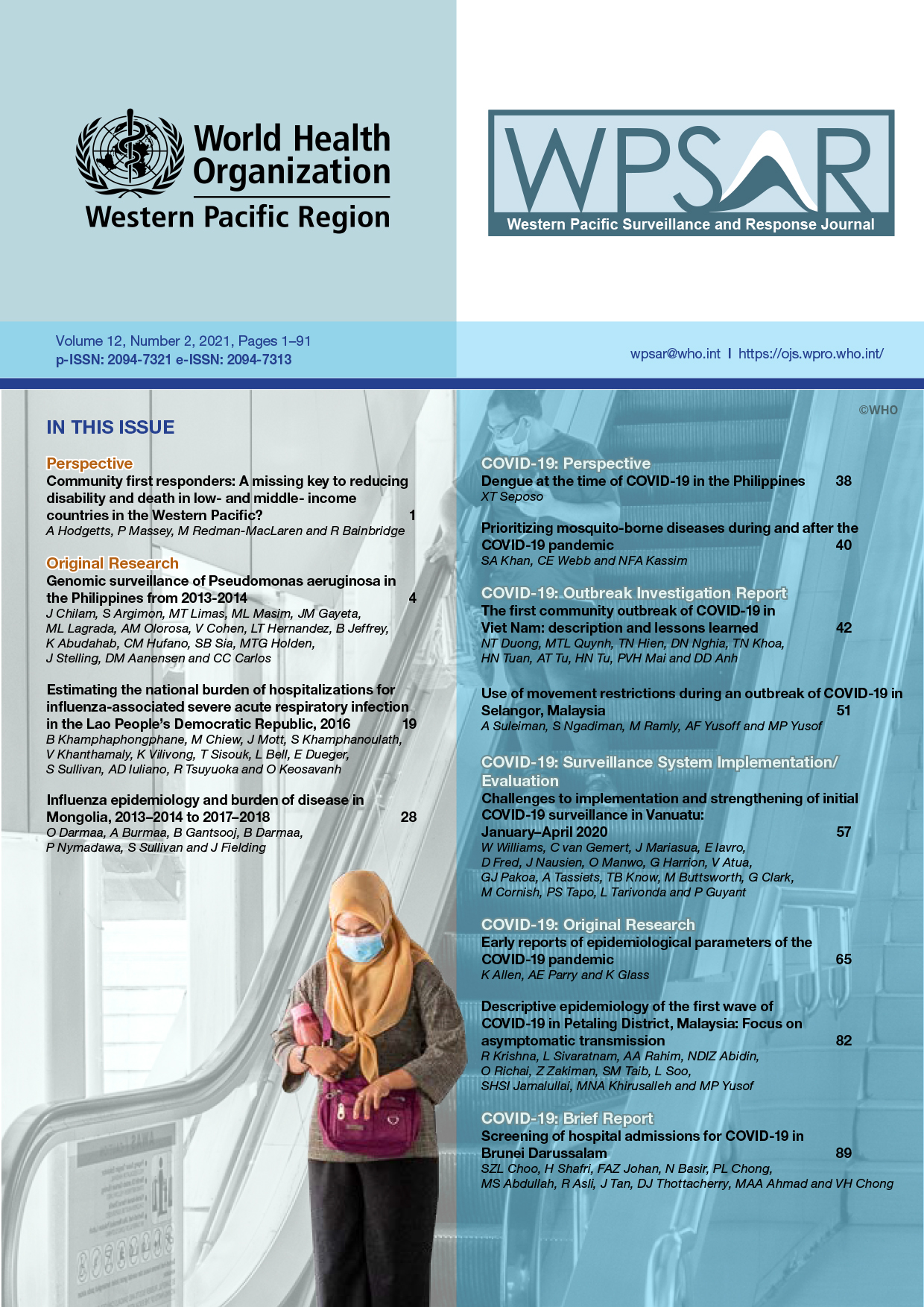The first community outbreak of COVID-19 in Viet Nam: description and lessons learned
DOI:
https://doi.org/10.5365/wpsar.2020.11.2.016Abstract
Objective: At the time of this study, the prevention of novel coronavirus disease 2019 (COVID-19) relied solely on nonpharmaceutical interventions. Implementation of these interventions is not always optimal and, consequently, several cases were imported into non-epidemic areas and led to large community outbreaks. This report describes the characteristics of the first community outbreak of COVID-19 in Viet Nam and the intensive preventive measures taken in response.
Methods: Cases were detected and tested for SARS-CoV-2 by real-time reverse transcriptase polymerase chain reaction. Contact tracing and active surveillance were conducted to identify suspected cases and individuals at risk. Clinical symptoms were recorded using a standardized questionnaire.
Results: In Vinh Phuc province from 20 January to 3 March 2020, there were 11 confirmed cases among 158 suspected cases and 663 contacts. Nine of the confirmed cases (81.8%) had mild symptoms at the time of detection and two (18.2%) were asymptomatic; none required admission to an intensive care unit. Five prevention and control measures were implemented, including quarantining a community of 10 645 individuals for 20 days. The outbreak was successfully contained as of 13 February 2020.
Discussion: In the absence of specific interventions, the intensive use of combined preventive measures can mitigate the spread of COVID-19. The lessons learned may be useful for other communities.
References
Wei WE, Li Z, Chiew CJ, Yong SE, Toh MP, Lee VJ. Presymptomatic Transmission of SARS-CoV-2 - Singapore, January 23-March 16, 2020. MMWR Morb Mortal Wkly Rep 2020;
He X, Lau EHY, Wu P, Deng X, Wang J, Hao X, et al. Temporal dynamics in viral shedding and transmissibility of COVID-19. Nat Med 2020;
Cheng H-Y, Jian S-W, Liu D-P, Ng T-C, Huang W-T, team TC-19 outbreak investigation, et al. High transmissibility of COVID-19 near symptom onset. medRxiv 2020;
Use of quarantine to prevent transmission of severe acute respiratory syndrome -Taiwan, 2003Morbidity and Mortality Weekly Report. 2003.
Lasry A, Kidder D, Hast M, Poovey J, Sunshine G, Winglee K, et al. Timing of Community Mitigation and Changes in Reported COVID-19 and Community Mobility ― Four U.S. Metropolitan Areas, February 26–April 1, 2020. MMWR Morb Mortal Wkly Rep 2020;
Brooks SK, Webster RK, Smith LE, Woodland L, Wessely S, Greenberg N, et al. The psychological impact of quarantine and how to reduce it: rapid review of the evidenceVol. 395, The Lancet. Lancet Publishing Group; 2020. p. 912–20.

